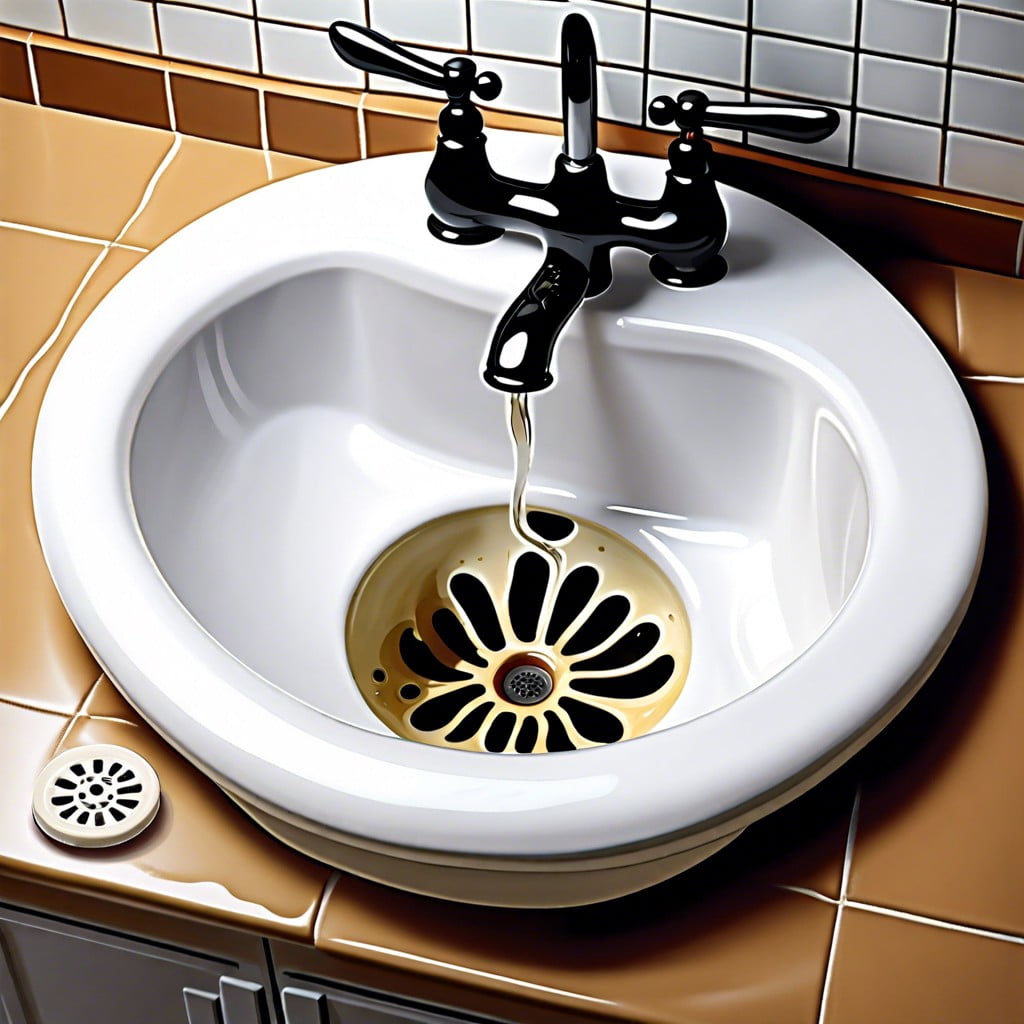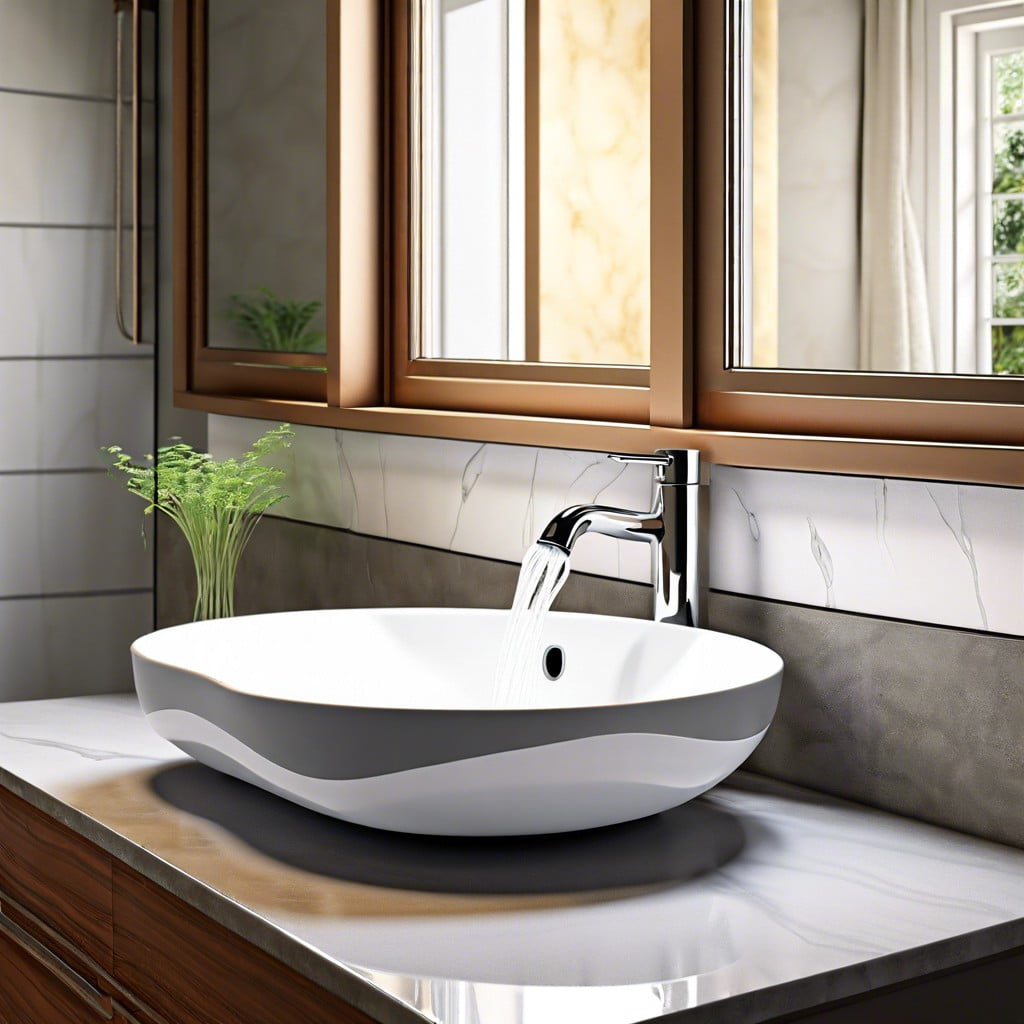Last updated on
Unblock your slow-draining sink with ease, as this guide unfurls clear, practical, and easy-to-follow steps to rectify the issue efficiently.
Key takeaways:
- Use a Drain Snake: Dislodge stubborn clogs without damaging pipes.
- Check and Clean the P-Trap: Remove hair and debris.
- Utilize Boiling Water: Dissolves soap scum and grease.
- Mix Baking Soda and Vinegar: Break down gunk and grime.
- Prevention Tips: Use a Sink Strainer and practice regular maintenance.
Use a Drain Snake
A drain snake, otherwise known as a plumber’s snake, effectively dislodges stubborn clogs that cause slow draining. Unlike chemical cleaners, it doesn’t risk damaging your pipes.
Begin by gently feeding the flexible auger into the sink’s drain until you encounter resistance. This is likely the clog. With a firm yet careful motion, rotate the snake to break through the blockage.
Once you feel less resistance, slowly retract the snake, bringing up debris with it. Perform this action a couple of times to ensure the removal of the clog.
Post-snaking, run hot water to clear any remaining obstruction, facilitating free-flowing drainage. Remember, while force is necessary, overzealousness can damage pipes; finesse is key.
Check and Clean the P-Trap
Accessing the P-Trap may seem like a plunge into the unknown, but it’s often where the slow draining mystery is solved. This curved pipe under the sink is designed to hold a small amount of water, creating a seal against sewer gases. However, it’s also a notorious catchment for hair, grease, and debris accumulations that clog your drain.
To tackle this, place a bucket beneath the P-Trap to catch any spillage. Then, unscrew the connectors holding the curved pipe to the neighboring pipes. You might need a wrench, but many modern fittings are designed to be hand-tightened for easy removal. After detaching, inspect the P-Trap for obstructions and rinse it thoroughly, scrubbing if necessary. Before re-attaching, double-check the washers—sometimes they need replacing to ensure a firm seal.
Remember, the goal isn’t just to make water flow smoothly today, but to create an environment where future clogs are less likely. A clear P-Trap is central to that aim.
Utilize Boiling Water
Boiling water can work wonders for clearing minor clogs caused by soap scum and grease. The high temperature helps to dissolve these substances, restoring flow to your pipes. Here’s why it’s effective:
1. Dissolving Power: Hot water has enhanced dissolving properties, especially on organic matter that tends to build up in your sink.
2. Grease Breakdown: It liquefies grease, allowing it to move along the pipes instead of sticking to the walls.
3. Soap Scum Solution: Scum buildup is also softened and broken down, clearing the pathway.
Pouring boiled water directly down the drain might be all that’s needed for less stubborn blockages, but remember that this method isn’t suited for PVC pipes, which can be damaged by extreme heat. Always verify your pipe material before employing this tactic.
Mix Baking Soda and Vinegar
When combined, baking soda and vinegar create a vigorous chemical reaction. This effervescence can effectively break down gunk and grime inside the drain.
Pour a half-cup of baking soda directly into the drain, followed by an equal amount of vinegar. The fizzing action can help to dislodge any blockages.
Cover the drain with a plug or cloth to ensure the reaction works its way down, not up. Let it sit for an hour, then flush thoroughly with hot water to clear the remnants.
This natural method avoids harsh chemicals, safeguarding your pipes and the environment.
Prevention Tips: Use a Sink Strainer
Avoiding a clogged sink begins with mindfulness. A simple mesh strainer acts as the frontline defense, capturing solid particles that have no business navigating down your pipes. By trapping food scraps, hair, and other debris, it minimizes the risk of blockages.
Remember, a sink isn’t a trash can. Dispose of grease and coffee grounds properly—never down the drain. These substances build up over time and are notorious for causing slow drainage.
Furthermore, practicing regular maintenance, such as running hot water after use, helps to dissolve and carry away lingering substances. This routine upkeep can keep your sink draining smoothly, avoiding the need for more drastic measures down the line.
FAQ
How do you clear a slow draining sink?
To clear a slow draining sink, apply a mixture of 1/2 cup of baking soda and 1/2 cup of vinegar, let it sit for several minutes, then rinse with boiling water.
Why is my sink draining slow but not clogged?
A possible reason for your sink draining slowly could be a blocked vent in your plumbing system that inhibits air flow, causing the water to drain at a reduced pace.
Why is my water so slow to drain?
The sluggishness in your water drainage could likely be attributed to the accumulation of residues, such as soap scum, hair products, shaving foam, and hair, which partially obstruct the drain, impeding the efficient flow of water.
How do you unclog a sink with standing water?
To unclog a sink with standing water, drain out the stagnant water, fill it halfway with hot water, then place a plunger over the drain and pump swiftly until water flows freely.
What are the top reasons for a bathroom sink to drain slowly?
The top reasons for a bathroom sink to drain slowly are typically due to blockages such as hair, soap scum, and other debris build-up in the p-trap, an improper venting system, or most commonly, a clog in the drainpipe.
How does regular maintenance prevent a sink from draining slowly?
Regular maintenance prevents a sink from draining slowly by eliminating obstructions like hair, soap scum, and food particles that can build up over time and block the pipe.
Are there specific products that can expedite the process of unclogging slow-draining sinks?
Yes, specialized products like drain snakes, plungers, and chemical drain cleaners can effectively expedite the process of unclogging slow-draining sinks.
Continue reading:
Recap


